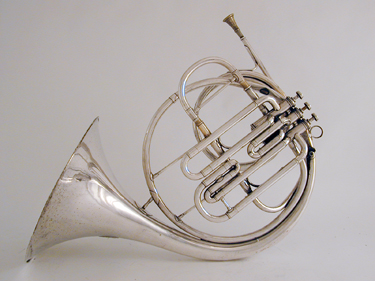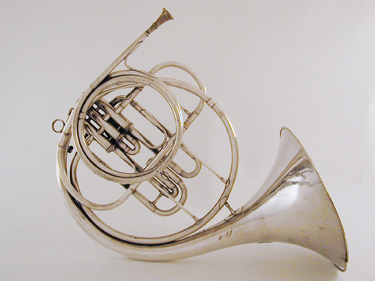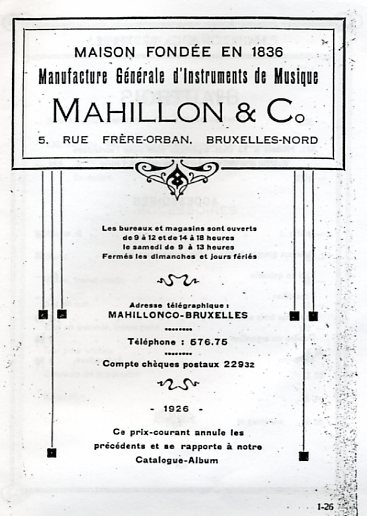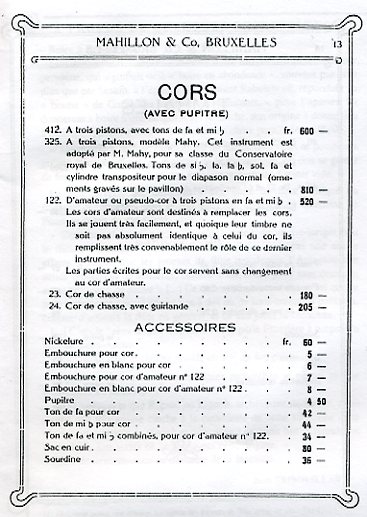The simple label on underside of the bell of the
horn includes the
smaller seal (below right) of the arms of Belgium
according to the Royal
Decree of March 17, 1837 one year after the
founding of C. Mahillon.
This was probably required as a supplier of
instruments to the army.
The firm of C. Mahillon was founded in Brussels in
1836 by Charles Borroméee Mahillon (1813 - 1887),
who after serving apprenticeship in England
returned to Brussels to become a partner with his
brother-in-law, C.G. Bachman as Bachman &
Mahillon. In 1844 they opened a branch in London
and by 1847 were exhibiting both brass and
woodwind instruments. By 1856 C. Mahillon became
the most important wind instrument manufacturer in
Belgium and was suppplier to the army, and also
maker of percussion instruments. Around 1865
eldest son, Victor Charles Mahillon (1841 - 1924)
was taken into the firm as a partner. The firm
continued in operation by the family for a century
until 1935. Two years later the firm was taken
over by Jean Adrien Smits doing business under the
name "Mahillon & Co. succ. J. Smits."
The valve section comprises three rather short
Périnet valves. The terminal crook is marked
for E-flat but plays in modern E (A=440).
The accompanying mouthpiece is marked "5" has a
medium-wide rim (4.2 mm), deep cup (32mm), and
very small throat (4.0 mm). The bell brace plate
(shown below) is doubled and not particularly well
finished. Overall the workmanship is competent but
there are numerous remaining file and tool marks.
Other models of the C. Mahillon single horn
include the 499 and the 325 "Mahy" model
described (but not pictured) in the 1926 catalog
(see illustrations below). After the company was
taken over by Jean Adrien Smits in 1937 the
original company name was retained but with Smits'
name added. On one example single horn the bell is
engraved as follows:
C. Mahillon, Succ. J. Smits,
Brevete, Fournisseur de L'Armee et Des
Conservatoires Bruxelles [cartouche with Arms of
Belgium and "L'Union fait la Force"], Modele
adopte M. G. LeBrun.
|
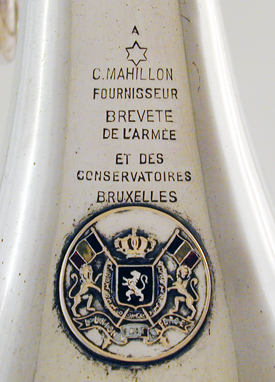
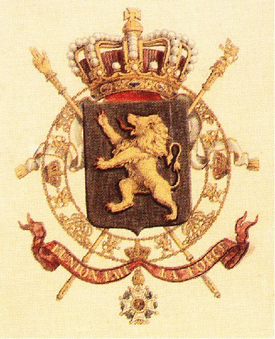
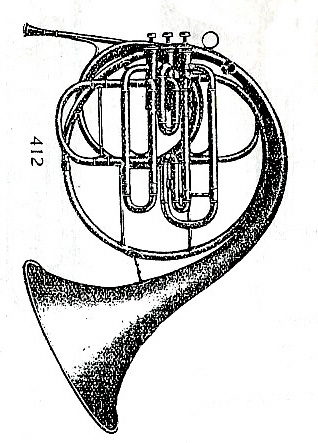
Model 412, 1926 Catalog p. 8
Larigot, No 26,
p. 16
|
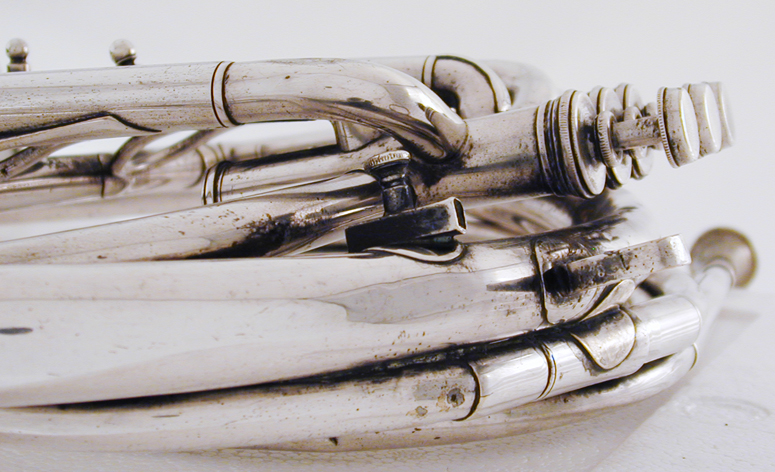
|
Victor Charles Mahillon
(1841 - 1924) was born in Brussels on March 10,
1841. He is of outstanding importance as a writer
on acoustics and musical instruments, and was the
honorary and zealous custodian of the museum of
the Brussels Conservatoire. After studying music
under some of the best professors there, he
applied himself to the practical study of
wind-instrument manufacture and was taken into his
father's business in 1865. He started a musical
journal L'Echo musical, in 1869 and continued it
until 1886, when his time became too much occupied
to attend to its direction. In 1876 he became the
honorary curator of the museum of the
Conservatoire, which, begun with Fétis's
collection of 78 instruments, was, through his
special knowledge and untiring energy, increased
(1888) to upwards of 1500. An important
contribution to it, of Indian instruments, was a
division of the fine collection of the Rajah Sir
Sourindro Mohun Tagore between the Brussels
Conservatoire and the R.C.M in London.
|
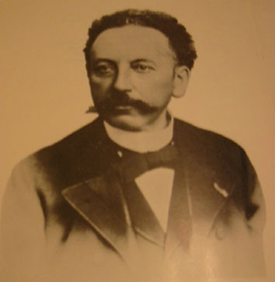
Victor Charles Mahillon
|
Victor Mahillon published two very important
works, besides three synoptical tables of
harmony, voices, and instruments. The first is
'Les Éléments d'acoustique musicale et
instrumentale', an octavo volume published in
1874, which gained for him in Paris in 1878 he
distinction of a silver medal. The other is the
catalogue of the Conservatoire, which appeared
in volumes annually from 1877 and is of the
highest interest. As well as these noteworthy
works he contributed to the ninth editon of the
Encyclopedia Britannica several historical and
technical articles of great value on wind
instruments, both wood and brass. As soon as
Mahillon could introduce a workshop into the
Conservatoire he did so, and he had
reproductions made of many rare instruments
which, through their antiquity or the neglect of
former owners, had too much deteriorated for
purposes of study. Among these reproductions the
Roman Lituus and Buccina in the Music Loan
Collection at Kensington, in 1885 were prominent
objects of interest in the fine selection
contributed under Mahillon's auspices by the
Brussels Conservatoire. He reproduced from
authentic sources the complete families of wind
instruments that were in use in the 16th and
12th centuries. Victor Mahillon's services to
the Inventions Exhibitions of 1885, in the
above-named contribution of instruments to the
Loan Collection, and the historical concerts
under his direction performed by professors and
students of the Brussels Conservatoire, at which
several rare instruments were actually played
upon in contemporary compositions, were so
highly appreciated by the Executive Council of
that Exhibition that a gold medal was awarded to
him. [Grove's Dictionary of Music and Musicians,
Fifth Edition, Volume 5 (1954), p.511]
|
|
